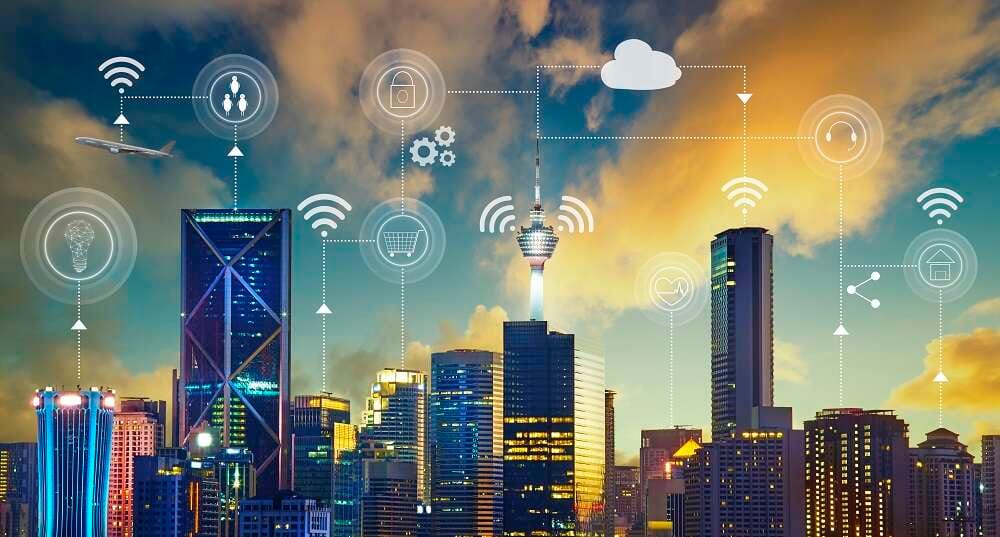
By Chris Bishop, Sales Director APAC & Marketing Director, Ipsotek – an Atos company
The COVID-19 pandemic has dramatically accelerated the digital transformation journeys of companies across multiple industries. Indeed, a global study of C-suite executives commissioned by IBM last year highlighted that almost six in ten businesses have brought forward their digital transformation plans because of the impact of the pandemic.
One of the main areas of investment in digital technologies has been artificial intelligence, with the 2020 RELX Emerging Tech Executive Report finding that 68% of businesses increased their spend on AI during the pandemic.
From providing businesses with the benefits of predictive analytics and enhanced customer experience to automating workflows, AI driven innovations have significantly supported businesses during the pandemic. The role of AI has also been crucial in helping companies adapt to social distancing regulations and contact tracing requirements.
Through the adoption of A.I.V.A. (Artificial Intelligence Video Analytics) solutions for example, companies have been able to remain operational while also protecting the health and safety of their workers by utilising existing camera networks and geospatial algorithms to detect an individual’s location in real-time.
In the era of social distancing, the benefits of this are significant because the algorithm detects when employees pass within a specified distance, say two metres of each other, and triggers an alert. If social distancing is not adhered to and individuals remain too close to each other for a pre-set period of time, say three seconds, an audio message can be played reminding staff of the need to adhere to social distancing guidelines for the benefit of themselves and their colleagues.
These instances and breaches are captured in real time, without recording any personal details of an individual, and are accessible via a dynamic dashboard which businesses can use to improve the safety and wellbeing of staff and customers.
Armed with this insight, businesses are able to pinpoint hotspots in their premises where breaches of social distancing commonly occur. This in turn enables them to determine if there is potentially further action that needs to be taken to reconfigure the layout of offices and facilities or to introduce additional signage or the use of alternative exits and entrances to buildings.
However, the application of AI in this way has uses and benefits well beyond supporting businesses during and post the pandemic. Being able to automate alert detection and improve decision-making is driving growing interest and demand for the integration of AI solutions linked to IoT devices into smart city projects.
This is demonstrated by the findings of a recent report from global tech market advisory firm ABI Research, which estimates that the global installed base of smart cameras with an AI chipset will reach over 350 million by 2025.
Driven by demand from governments around the world for AI solutions to aid with smart city growth, the report estimates that close to two-thirds of cameras are expected to feature a minimum of one AI chipset by 2025.
It is true however that widespread integration is to some degree dependent on winning over public trust, with concerns around technologies such as face recognition still prominent. We have seen such concerns raised in the UK among the public when it emerged that a face recognition system in use at King’s Cross Station in London was being used to obtain images without the knowledge of the Mayor’s office or the Metropolitan police.
In the US, there are similar concerns around face recognition technology. Indeed, this has legal ramifications, with lawmakers intent on trying to reintroduce a Bill to prevent the use of face recognition technology by federal agencies.
What is missing from these conversations and debates, however, is that there are AI technologies and solutions that do not compromise an individual’s privacy, while still providing extremely valuable insights. In some respects, this is where there is a lack of awareness around the fact that technology is outpacing regulation.
An example of this is the use of CCTV, which is abundant in densely populated urban areas. Last year, research revealed that London has 627,727 cameras for 9.3 million residents; or 67.5 cameras per 1,000 people. However, while CCTV footage can provide valuable information it is equally challenging to utilise this due to the sheer volume of data we’re talking about.
This is where AI can play a significant role in aiding smart city development through key areas such as traffic management and pedestrian flow using A.I.V.A. solutions, which can determine an individual’s or vehicle’s location in the camera field of view in real-time.
This is achieved by learning the perspective of the scene and calculating the GPS coordinates of the individual or vehicle based on their location in the camera’s field of view. Importantly, these calculations do not rely on identifying individuals via face recognition or accessing a mobile phone signal, resulting in no personal data being obtained.
In the case of a single individual or one vehicle, such insights might not be considered particularly valuable. But when you consider that this process could be used built on analysis from thousands of CCTV cameras across multiple locations and hundreds of hours of footage, the resulting reports generated could provide extremely meaningful information. This might include pinpointing the busiest intersections at a particular time of day or road crossings attracting high volumes of pedestrians.
AI used in this capacity looks to understand general behaviour patterns, which without it are time-consuming and costly to identify, without impinging on the privacy of individuals. It is time we started to really benefit from AI’s true potential without being afraid of its deployment.


